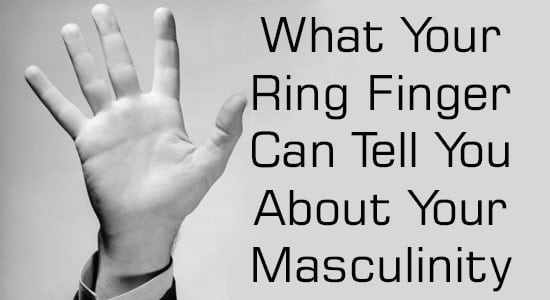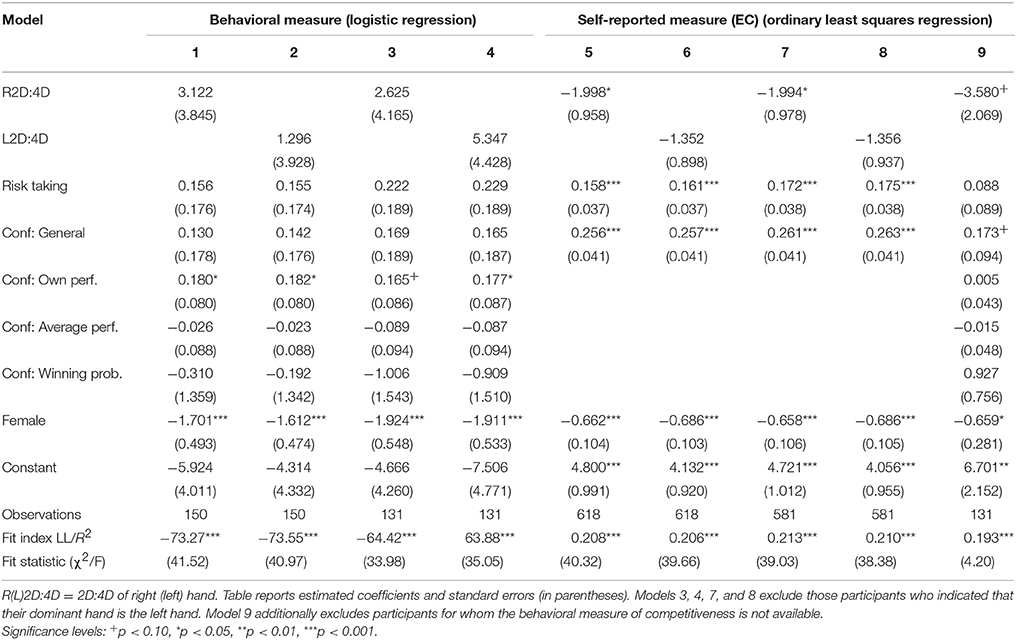


Conclusion: There are significant relationships between the 2D:4D ratio and postpartum female variables. 025) was positively correlated with the 2D:4DR. Unexpectedly, the red blood cell count (RBC: r = 0.138, p =. Moreover, the 2D:4DR was inversely correlated with height (r = À0.164, p =. In addition, the mean cell volume was inversely correlated with the 2D:4DR (r = À0.139, p =. 016) were inversely correlated with the 2D:4DL and the 2D:4DR respectively. 040) and the platelet-neutrophil ratio (PLR: r = À0.153, p =. The absolute basophile count (BASO: r = À0.124, p =.

038) was inversely correlated with the 2D:4DR.
#2d 4d ratio free#
019) were inversely correlated with the 2D:4DL while free testosterone (FT%: r = À0.157, p =. 015) and the free androgen index (FAI: r = À0.186, p =. Results: The mean ± standard deviation 2D:4DR and 2D:4DL were 0.94 ± 0.04 and 0.93 ± 0.04, respectively.

Fasting venous samples were collected at a median (interquartile range) of 111 (44-210) days postpartum and analyzed for total testosterone (TT), estradiol, sex hormone-binding globulin, and complete blood count. The right (2D:4DR) and the left (2D:4DL) digit ratios were measured using computer-assisted analysis. Methods: The study was cross-sectional from December 2020 to April 2021 involving 272 postpartum adult females, aged between 18 and 36 years. The study aimed to determine the relationship between the 2D:4D ratio and postpartum hematological and anthropometric variables in adult females. 'The 2D:4D ratio can't be considered a universal masculinization marker, but it makes sense to use it among other indicators to evaluate the risks of oestrogen abundance in embryos and the possible consequences for human health.Objectives: Postpartum hematological and anthropometric assessment is a requirement for optimal maternal and child health. These variations can be explained by both genetic factors and specific environmental factors, such as nutrition and stress levels,' explained Marina Butovskaya, Chief Research Fellow at the HSE International Centre of Anthropology. '2D:4D ratio is a sexually dimorphic characteristic, while its degree in total and in sex differences varies from population to population. It is likely that sex and sex hormone levels directly impact the 2D:4D ratio. The lack of correlation between total finger length and 2D:4D ratio does not confirm the alternative explanation of the ratio differences in males and females based on allometry hypothesis. In addition, boys and girls under 13 had about the same finger lengths, while the 2D:4D ratios were already present. But the data analysis showed no evidence of this: sex differences in 2D:4D ratios were present in all nationalities and ages, while finger lengths in men and women varied. It had been assumed that if differences in total finger lengths rather than sexes impact the 2D:4D ratios, then these two indicators will be correlated. To test this hypothesis, the researchers collected data on finger length and 2D:4D ratio from over 7,500 people, including representatives of the three big races, different ages and nationalities they then compared the 2D:4D ratios and finger lengths in these cohorts. Some believe that 2D:4D ratio differences are only due to differences in total finger length and their uneven growth (allometry) in men and women, which is related to specifics in bone or fat tissue development prenatal hormone levels don't play any role. However, not all researchers agree with this theory. It is believed that the ratio is due to differences in sex hormones - androgens and oestrogens - particularly during prenatal development. The assumption with 2D:4D ratio is that the ring finger in men is longer than the index finger, while in women, these fingers have equal length or the index finger is longer than the ring one. The results of the study were published in Scientific Reports. A research team including HSE University scholars refuted this hypothesis by collecting data on finger length from 7,500 people. However, an alternative theory states that men have bigger body parts, including fingers, which impacts the 2D:4D ratio. The ratios between the lengths of the second and fourth fingers, known as the 2D:4D ratio, are different in males and females, which is often explained by levels of androgens and oestrogens.


 0 kommentar(er)
0 kommentar(er)
